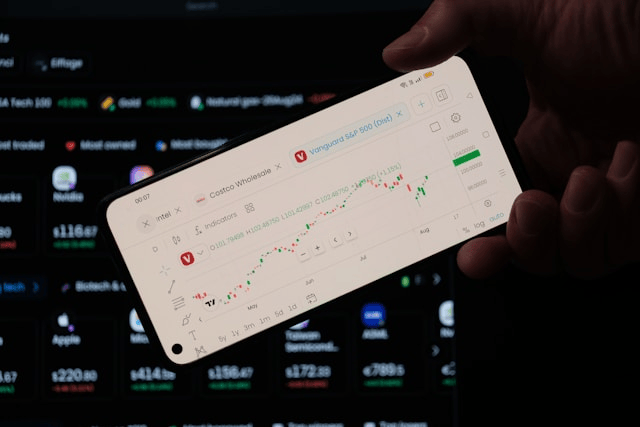Trading in financial markets can be exciting, but it also comes with a fair amount of risk. Whether you’re diving into forex, stocks, or cryptocurrencies, it’s essential to have a solid strategy before committing your hard-earned money. That’s where a demo trading account becomes a valuable tool. It provides a risk-free environment to test and refine your approach, making it easier to transition to live trading when the time is right.
In this article, we’ll explore how using a demo trading account can significantly sharpen your strategy and boost your confidence in the markets.
What Is a Demo Trading Account?
A demo trading account is a simulated version of a real trading platform. It allows you to buy and sell financial instruments such as stocks, forex pairs, and cryptocurrencies using virtual money. While no actual money is at stake, the market conditions are often close to real-time, making it an ideal space for learning and experimentation.
Many brokers offer a stock trading demo or a forex demo account as part of their platform, giving users a realistic experience of market fluctuations, price spreads, and order executions.
Learn Without the Risk
Perhaps the biggest benefit of a demo trading account is the ability to learn without financial risk. As a beginner, you can familiarize yourself with platform tools, charting software, and trade types like market orders, stop-loss orders, and limit orders. Mistakes won’t cost you real money, which allows you to make them, learn from them, and improve without fear.
You can also explore different trading markets stocks, forex, commodities, or crypto and discover which one suits your personality and goals the best.
Practice Makes Profit: Strategy Testing
A great trading strategy is not created overnight. Even seasoned traders refine their approaches regularly. With a demo trading account, you can test a wide range of trading strategies without any consequences.
Want to see how a moving average crossover works on a forex demo account? Or how Bollinger Bands perform in a volatile crypto environment? You can do all this and more repeatedly until you find what works for you.
Testing strategies also helps with:
-
Identifying ideal entry and exit points
-
Choosing the right indicators and timeframes
-
Adjusting your risk-reward ratio
-
Understanding market reactions to economic news
Without the pressure of losing real money, your focus shifts to learning and improving, which is the foundation of long-term success.
Understand Market Behavior in Real Time
While textbooks and online courses teach the basics, nothing compares to watching the markets move in real time. A demo trading account allows you to observe how prices react during major news releases, earnings reports, or geopolitical events. These insights are invaluable.
You’ll also start to see patterns in market behavior and get a feel for how volatility affects different assets. This hands-on experience sharpens your decision-making and helps develop your trading intuition.
Improve Execution and Emotional Control
One often overlooked benefit of demo accounts is improving trade execution. Placing the right type of order at the right time can be the difference between profit and loss. Practicing this in a simulated setting helps you get faster and more accurate.
Even though a demo trading account doesn’t carry real risk, it still allows you to practice discipline and control over your emotions. This is key when transitioning to live trading, where fear and greed often lead to impulsive mistakes.
Track Your Progress and Optimize
Most demo platforms come with built-in analytics. These tools let you review past trades, track your win/loss ratio, average profit per trade, and other performance metrics. By reviewing this data, you can spot trends in your decision-making both good and bad.
Keeping a trading journal is also recommended. Document your reasoning behind each trade and review it later. This habit will dramatically improve your understanding of what works and what doesn’t in your strategy.
From Demo to Live: Making the Transition
While a demo account is incredibly useful, it’s important to recognize its limitations. Since there’s no real money on the line, you don’t experience the emotional highs and lows that come with real trading. There’s also no slippage, and execution might be faster than in a live environment.
To make a smooth transition from demo to live trading:
-
Start small: Use minimal capital to reduce emotional pressure.
-
Stick to your tested strategies: Don’t improvise suddenly.
-
Treat your live account with the same discipline you used in demo practice.
Remember, the goal is not just to win trades but to trade consistently and responsibly over time.
Why Every Trader Should Use a Demo Account
Regardless of experience level, every trader can benefit from a demo account. Beginners can learn the ropes, while experienced traders can try new strategies or adapt to new market conditions. Even professionals use a demo to backtest ideas before applying them to a live portfolio.
Using a practice trading environment lets you focus on strategy development, risk management, and platform mastery all essential skills for trading success.
Conclusion
A demo trading account is much more than a beginner’s playground, it’s a powerful tool for learning, experimenting, and refining your trading strategy. It offers a real-world simulation without the stress of financial loss, allowing you to build both confidence and competence.









